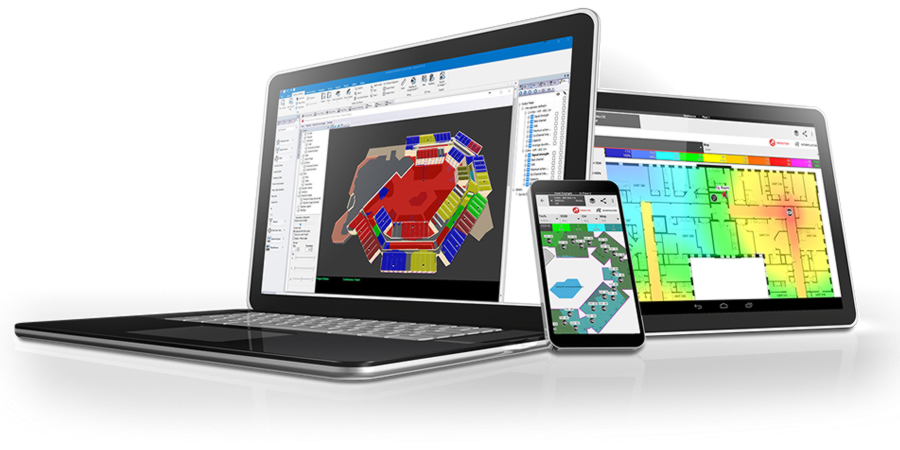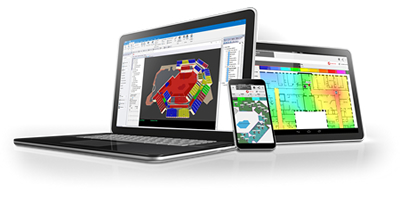
iBwave Solutions is a telecom radio planning software provider that develops solutions for the in-building wireless industry. The Canadian-based company has enjoyed phenomenal growth and success since its inception in 2003 and is headquartered in Montreal.
iBwave has established a stellar reputation in the telecommunications industry and was acquired by Corning Incorporated in 2015. However, it is perhaps best known for its software iBwave Design, mostly used by telecom operators, system integrators and equipment vendors.
Dean Bubley, Founder and Director of Disruptive Analysis produced a comprehensive e-book on behalf of iBwave Solution which explored some of the key strategic shifts and business drivers for integrative cellular Wi-Fi and fiber infrastructures.
The thought leadership e-book documents these key strategic shifts and trends in great detail, and in this feature iBwave will focus on the three key themes of the e-book, which are: The Future of Indoor/In-Building Wireless, Network Convergence and Policies, Regulations and Public Safety.
Network Convergence:
According to Bubley “wireless convergence” refers to indoor or on-site network infrastructure, linking cellular and Wi-Fi, as well as optical cabling used around a building, and maybe various other wireless platforms as well . It also links together the worlds of the service-provider and venue-owner, and fits with various other emergent wireless technologies themes such as spectrum-sharing, IoT, edge -computing and cloud-based radio network.
He cautions that before we consider new applications of wireless, or new stakeholders, we should recognize that the underlying technologies are evolving rapidly to. In the past, we’ve seen moves from 2G to 3G to 4G, plus continual improvement of Wi-Fi standards – but some of the coming changes make even those look minor in comparison. 5G in particular brings some important new transitions that will drive convergence and accelerate upgrades and replacements to in-building infrastructure:
Future of Indoor/In-building wireless:
The Founder and Director of Disruptive Analysis has urged those within the wireless industry to think a lot more carefully about indoor wireless network, as they will be used as a core part of many future businesses, and tenants and employees will expect them to just work, hiding the complexity in the background.
Bubley says, “Whether it’s a visitor expecting good Wi-Fi coverage, or an industrial robot needing extreme high-performance connections – it’s critical that we don’t just take connectivity for granted, but actively make plans, and expect rapid change and convergence.
In summarization, this basically means that future in-building systems will have a much richer mix of distributed antennas, small-cells and Wi-Fi access points. Fiber connections will become ever more essential, as the radios need gigabit backhaul – and perhaps multiple connections, especially for MIMO antennas or “carrier aggregation”, where several frequencies are bonded together for maximum throughput.
Policies, Regulations and Public Safety:
A separate but important area of wireless convergence is that of normal public mobile networks converging with those used for public safety. Increasingly according to Bubley emergency services are shifting from dedicated mobile-radio technologies like TETRA and P.25 to newer LTE-based platforms for critical communications.
In many cases, the new networks are managed by cellular operators such as AT&T managing FirstNet in the US, or BT/EE running the UK Emergency Services Network (ESN). Other examples may be deployed directly by government agencies.
While in some cases these may have dedicated frequency bands, they may only be deployed in some locations, with prioritized roaming onto public networks in others – including in-building. The switchovers will likely happen gradually, with a need for both systems to run in parallel, with the new platform developing cautiously, while the old one is slowly phased out.
As well as bringing extra regulatory considerations, future broadband public-safety networks may also require different patterns of coverage and therefore in-building infrastructure. It may be necessary to cover all areas/ volumes of many structures, including elevator-shafts, stairwells, basements and rooftops, as these could be either fire-escapes, or perhaps sources of combustible material – even ceiling voids may need coverage.
However, it’s also important to ask how do the trends in law and government affect convergence? Policymakers and regulators have both direct and indirect effects on indoor wireless, and therefore convergence.
As well as various new spectrum bands being used indoors, Bobley says we will see different methods for authorizing and allocating them. This will have a profound impact on indoor wireless systems and value-chains, as well as processes such as test-and measurement.
These frequencies might be used by existing mobile operators individually, shared by several operators in a consortium, or in some cases run by the venue-owner itself, or a third-party partner. We will start to see various sectors running private cellular networks, or perhaps a new breed of “Industrial Mobile Operators” – maybe set up as arms of industrial suppliers like GE or Siemens or Phillips or Honeywell.
There are various models for how this might work in terms of in-building infrastructure and some may use dedicated small cells and others more distributed DAS-type approach. It is still very early stages for many of these concepts, so innovation and experimentation are probable in coming years. Flexibility to adopt – and perhaps drop new models will be seen as advantages.
Another policy move likely by some regulators is a focus on indoor coverage metrics as part of MNOs’ spectrum licences. For example in the UK, O2 had to deliver an indoor data service of at least 2Mbit/s to 98% of UK premises, by the end of 2017. Future spectrum awards are likely to be more stringent, also reflecting the ways in which smartphones are used (for example – in inside rooms such as bathrooms, which may be two walls from the exterior of the building), together with users’ expectations of network performance s.
While the current focus is probably on residential property and apartment blocks (as that is most-visible to voters), we may find some governments deciding that commercial or industrial properties deserve similar attention, especially as wireless connectivity is shown to be a driver of GDP and employment .
To download the full e-book, visit https://hubs.ly/H0cGVqx0







